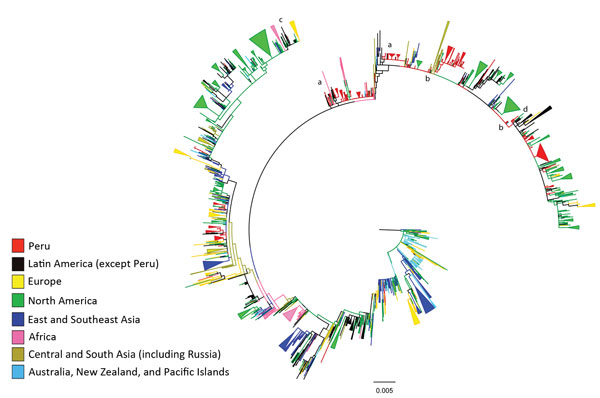Volume 21, Number 8—August 2015
Research
Phylogeography of Influenza A(H3N2) Virus in Peru, 2010–2012
Figure 2

Figure 2. Maximum likelihood phylogeny of hemagglutinin sequences of influenza A(H3N2) viruses from Peru and other global locations, rooted on the oldest available sequence (A/Hong Kong/CUHK52390/2004). Clades containing strains from Peru and a neighboring country are indicated by the letters a–c, designating Bolivia (a), Chile (b), and Ecuador (c). The letter d indicates phylogenetic evidence of migration from Peru to North America, with onward transmission after seeding that region. Scale bar indicates number of nucleotide substitutions per site.
Page created: July 14, 2015
Page updated: July 14, 2015
Page reviewed: July 14, 2015
The conclusions, findings, and opinions expressed by authors contributing to this journal do not necessarily reflect the official position of the U.S. Department of Health and Human Services, the Public Health Service, the Centers for Disease Control and Prevention, or the authors' affiliated institutions. Use of trade names is for identification only and does not imply endorsement by any of the groups named above.